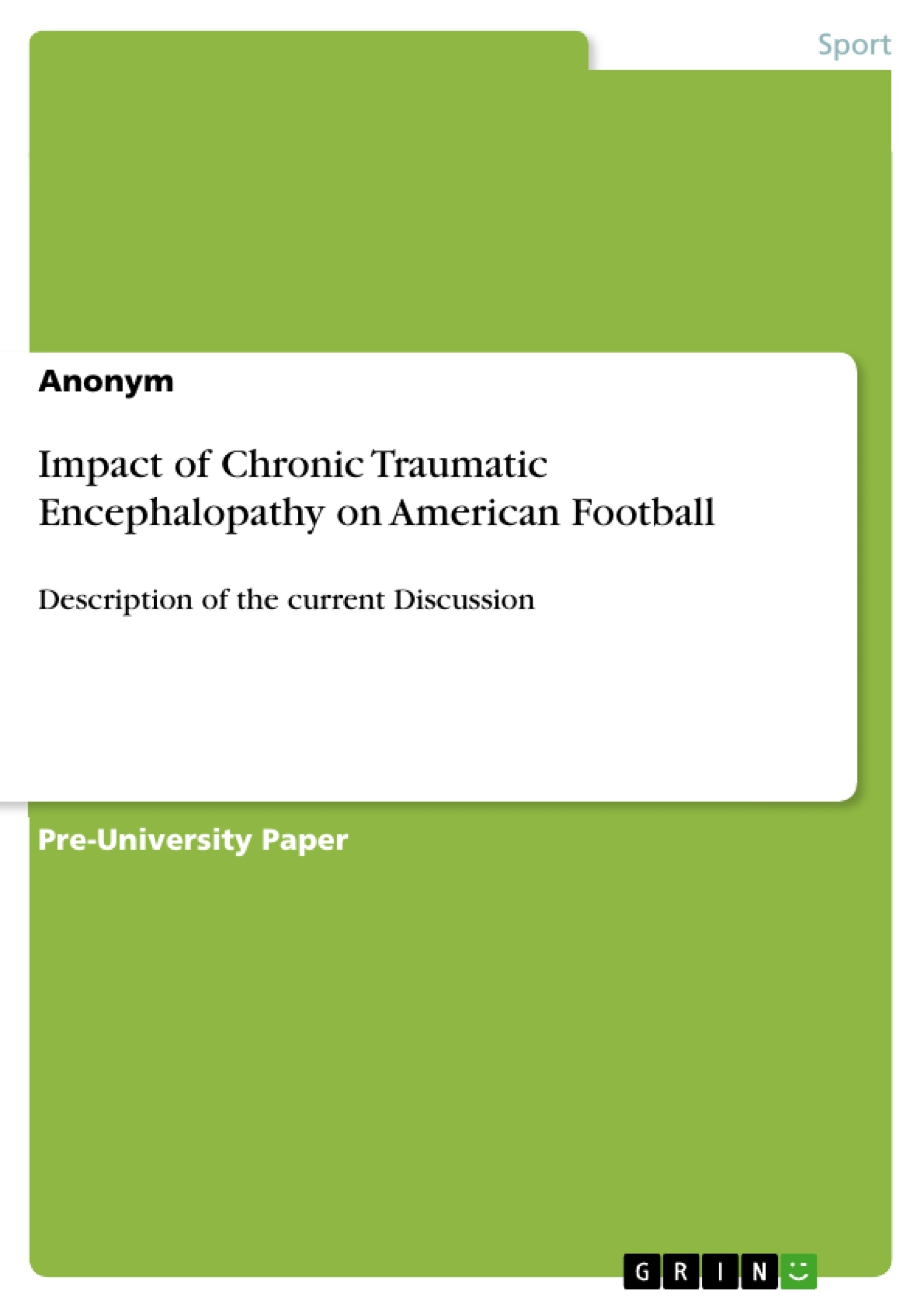This paper gives an overview about the current discussion oft he impact of Chronic Traumatic Encephalopathy (CTE) on American Football. Therefore, chapter 2 gives a brief historic overview on the research of head injuries, defines the disease, analyses symptoms, risk factors and stages of CTE as well as the current medical therapies. Football is not only a multi-million-dollar business but represents the American dream and way of life like no other sport. An overview of the different involved stakeholders and their economic and individual interests will be given. This economic and cultural importance of football for the nation will be highlighted and explored in chapter 3.
Chapter 4 explores the impact of CTE on the sport. This covers the current research and development of new materials and future technologies in personal protection equipment and also changes in the rules and format of the game. Consequences of awareness campaigns and controversial debates will be highlighted. Chapter 5 evaluates the different aspects, discusses the impact CTE will have on American football and gives an outlook for the future of the game.
Table of Contents
- Introduction
- New public awareness for CTE in American football based on the discoveries by Dr. Bennet Omalu
- A brief history and new public awareness for Chronic Traumatic Encephalopathy (CTE)
- Definition, classification and demarcation of Chronic Traumatic Encephalopathy (CTE)
- Causes, risk factors, stages and symptoms of CTE
- Diagnosis and therapy
- Social, cultural and economic importance of American football in the USA
- Economical Importance of American football
- Social and cultural importance of American football
- Assessment and impact of CTE on professional and amateur American football
- Improvement of personal protection equipment
- Adoption and changes in the rules of the game
- Conclusion
Objectives and Key Themes
The purpose of this essay is to analyze the impact of Chronic Traumatic Encephalopathy (CTE) on American football. The essay will trace the history of research on head injuries in contact sports, define CTE, explore its causes, risk factors, and stages, and examine the current status of treatment. Additionally, the essay will investigate the economic and cultural significance of American football and explore the impact of CTE on the sport, including the development of new safety equipment and rule changes.
- The history and evolution of research on head injuries in contact sports
- The definition, classification, and demarcation of Chronic Traumatic Encephalopathy (CTE)
- The causes, risk factors, stages, and symptoms of CTE
- The economic and cultural importance of American football
- The impact of CTE on the sport, including safety measures and rule changes
Chapter Summaries
The introduction sets the stage for the essay by outlining the author's personal interest in the topic of CTE, stemming from their experience as an athlete and exposure to the movie "Concussion". The introduction highlights the importance of understanding the risks associated with contact sports.
Chapter 2 provides a brief historical overview of research on head injuries, focusing on the evolution of understanding concussions and the emergence of CTE as a distinct disease. The chapter defines CTE, discusses its causes and risk factors, analyzes the stages of the disease, and reviews current medical therapies.
Chapter 3 explores the economic and cultural significance of American football, emphasizing its status as a multi-million-dollar industry and a symbol of the American way of life. The chapter examines the diverse stakeholders involved in the sport and their economic interests.
Chapter 4 investigates the impact of CTE on the sport of American football, examining the development of new protective equipment and the implementation of rule changes to mitigate the risks of head injuries. The chapter highlights the ongoing research in this field and the controversies surrounding CTE awareness campaigns.
Keywords
The main keywords and focus topics of this essay include: Chronic Traumatic Encephalopathy (CTE), concussions, head injuries, contact sports, American football, research, diagnosis, treatment, safety equipment, rule changes, economic importance, cultural significance.
- Quote paper
- Anonym (Author), 2018, Impact of Chronic Traumatic Encephalopathy on American Football, Munich, GRIN Verlag, https://www.grin.com/document/937183



